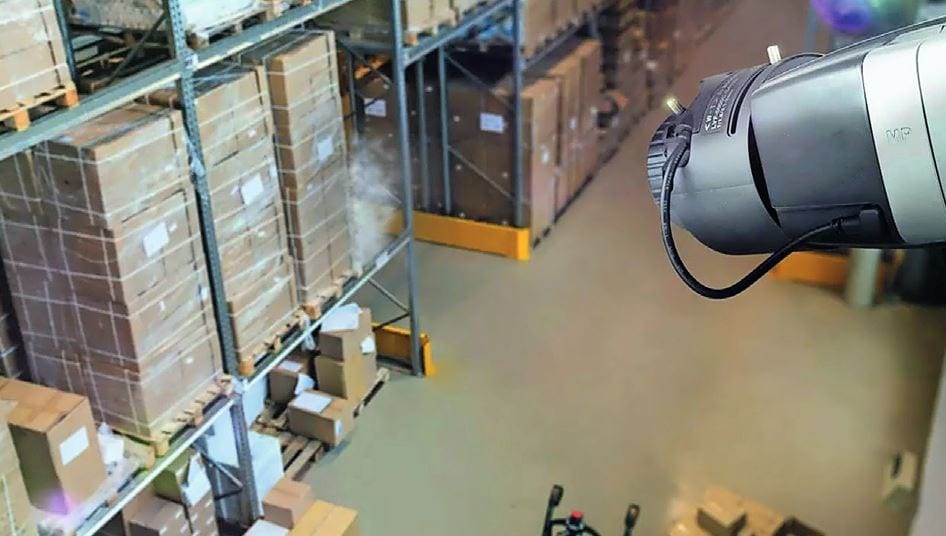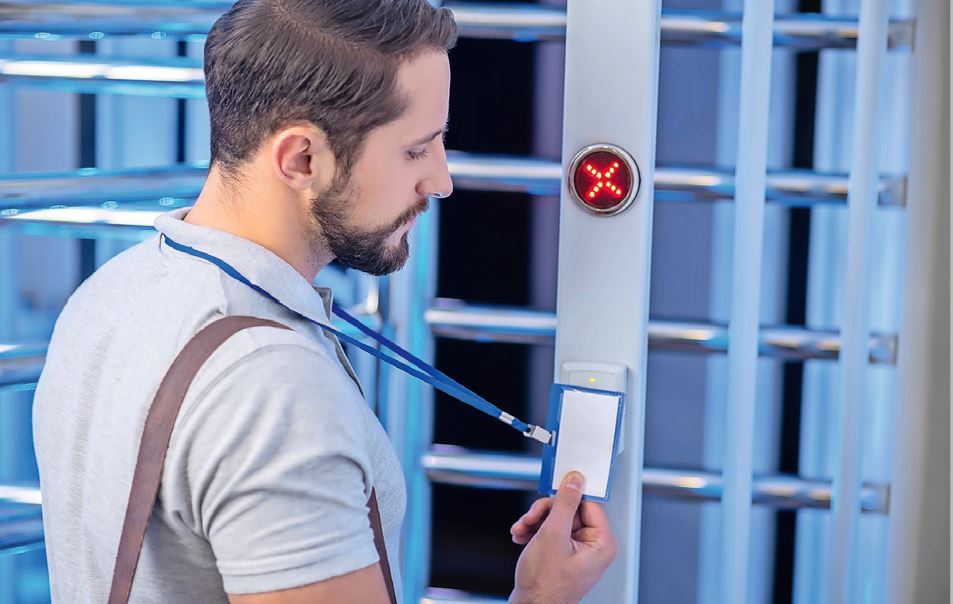Safety technology with artificial intelligence
Artificial intelligence (AI), an almost unknown term just a few decades ago, is on everyone's lips today. It can be detected in many sciences, economic sectors and areas of life. Together with the basic technology of digitalization, it forms a key technology of the 21st century.

AI can be defined as the technical performance of enabling data, sensors and processes with the aid of algorithms aligned to the desired goal to recognize patterns or correlations, or even to carry out knowledge processes in a self-learning manner by means of data enrichment in several layers and to trigger alarms or initiate other reactions depending on the detection result. Depending on the capability, two phases of AI are distinguished: pattern recognition as machine learning and the capability known as artificial neural networks or deep learning, which uses the highest-resolution cameras and audio systems or corresponding sensor technology to self-learningly extend detection and recognize patterns that humans cannot easily see or hear. AI is capable of effectively supporting humans in cognition and decision-making processes and complementing their capabilities. It can even calculate the probability and proportional strength of individual causalities using correlations within the framework of given possible causalities. But it cannot replace human intelligence, which incorporates non-systemic circumstances, intuition, will and creativity into the decision-making process, even if Paul Thagard in his recent book on "Bots and Beasts" (1) believes that humans are not the sole yardstick when it comes to the full potential that computers may one day unleash.
AI of individual technologies
Security technology also benefits greatly from AI. This will be demonstrated below for certain technologies and their areas of application with a few examples. The optimization of image analysis in video technology through AI is well known. The spectrum of image analysis controlled by intelligent algorithms ranges from pattern recognition, which in individual cases exceeds human vision, by means of high-resolution recordings, to self-optimizing learning processes for the detection of behavioral patterns and image changes, to automated alarm triggering based on intelligent detection. Processors on which the intelligent data analysis is performed convert the moving images directly in the camera into the required data formats. (2) In biometrics, AI has revolutionized facial recognition. Using intelligent algorithms, facial image analysis is performed either in the camera by matching against a "blacklist" (blocked list) or "whitelist" (shared list), or on a server, combined with the matching of thousands of images from a database. AI also enhances the performance of sensor technology. This is true for imaging, thermal and infrared cameras, as well as laser, radar, LiDAR and RFID sensing. The dependence of robotics technology on AI is self-evident. Increasingly intelligent algorithms are enabling security robots to sense irregularities and obstacles, detect hazards from gases and other chemicals, document such conditions, and initiate responses. AI has also found its way into cryptography technology. Quantum cryptography is considered absolutely secure. Every eavesdropping attack changes the bit sequence of the quantum code and automatically leads to the generation of a new quantum key.

AI in safety engineering applications
AI plays a significant role in access control. Access authorization is transferred digitally to an RFID badge and checked and updated at the entrance terminal by an update reader. Access authorization, any restrictions on access to certain, especially sensitive, indoor areas, and visitor management are linked together. Access to highly sensitive areas is equipped with two-factor authentication. Identity verification can be performed by comparing biometric characteristics. A robot takes over the greeting of a visitor and his assistance in the registration process. For access control, license plate recognition through video surveillance is an effective means. With the wide-range reader for barriers, rolling gates or garage entrances, transponders are also read from the vehicle on the basis of ultrahigh frequency.
The entry authorization can be linked to the control of the vehicle in the controlled area and to the assignment of a parking space. Effective perimeter protection consists of a mechanical component (wall or fence) and electronic monitoring of attacks by destruction or climbing over. Different sensor technologies (video surveillance, radar, LiDAR, wiring in the fence or under the ground) can be used, optimized in their functions of detection, false alarm resistance and tracking of an intruded perpetrator by AI using precise pattern recognition, object determination, direction recognition and tracking by networked camera systems. In particular, combining multispectral PTZ cameras with radar increases detection probability and reduces false alarms. (3) The minimum resolution density is specified in the DIN EN 62676-4 standard. AI ensures a false alarm rate close to zero. (4) In an intrusion detection system, deterrent mechanisms are activated by lighting, camera control and acoustic warnings via a public address system. The factory premises, but also spatially distant factory premises, can be monitored by drones whose built-in video technology is equipped with the AI explained earlier. The image information can already be evaluated during the live stream and stored in a tamper-proof manner. Fire detection is optimized by AI. For example, the Edwards ModulaLaser system works with dust suppression algorithms. Automatic adaptation to the respective ambient conditions ensures maximum sensitivity, optimal alarm thresholds and low false alarm rates.
By monitoring the internal detector measurement chamber and the dust filter in front of it, AI can continuously adjust the operating parameters automatically to counteract contamination. (5) Bosch's Aviotec fire detection system also operates on the basis of AI algorithms that can detect fire and smoke in changing weather and lighting conditions. And the IQ Firewatch sensor system developed by IQ Wireless GmbH can also be used in all weather conditions and detects smoke up to 60 km away. It can therefore be used in particular for early detection of forest and industrial fires. (7) The system covers a spectral range of 400 to 1100 nanometers through a combination of different sensors, so that its "visual power" exceeds that of the human eye. Control center technology is also being further optimized by AI. In particular, control centers with different software systems can be linked automatically via digital interfaces using intelligent algorithms. For all safety-related systems, the organization of maintenance and servicing will be revolutionized by AI. Based on all available data from the design process and the entire life cycle, from ongoing operation, operating and environmental conditions, the AI-based "predictive maintenance" process calculates the optimal time for maintenance and servicing in each case. This means that a system failure and a costly interruption of operations can be avoided. Predictive analytics has also been made possible by AI, for example in optimizing access and access control management at major events by detecting and effectively directing visitor flows, predictive calculations of traffic flow, and detecting any panic development. (8)
Perspectives
The performance level of AI will continue to increase in the future, and in ever shorter innovation cycles. This applies in particular to self-learning systems and the use of Big Data for predictive knowledge and prevention processes. It therefore makes sense, both at the corporate level and from scientific institutions and the government side, to promote further research and development of AI. (9) At the same time, work is underway to standardize AI and enable certification. For example, a working group of the German Federal Office for Information Security (BSI) and the Fraunhofer Institute for Intelligent Analysis and Information Systems is working to define standardization-ready testing principles and sets of criteria for AI systems. (10) And TÜV Süd AG is preparing to certify AI. (11) In a survey of more than 1,000 people by the TÜV association on whether AI regulation made sense, 90 percent of respondents answered in the affirmative and called for legal regulations. In the meantime, there is a draft regulation from the EU Commission that restricts the use of AI in video surveillance. (12) And the European Parliament also wants to regulate AI more strongly and ban databases for facial recognition or predictive policing.
Identity verification in an access control system can additionally be performed by comparing biometric features. This turns access authorization with a classic RFID card into two-factor authentication.
The use of powerful thermal imaging cameras in the fire protection system allows the detection of the smallest embers due to their high geometric resolution.
Literature
1) The MIT Press, Cambridge 2021
2) Edge analytics
3) GIT Security, Newsletter from 20.10.2021
4) The Security Service (DSD),
Issue 1-2021, p. 18-20
5) GIT Security, Issue 8-2021,
S. 66/67
6) GIT Security, Issue 10-2021, p. 96/97
7) s+s report, issue 2-2021, pp. 50-55
8) For example, with the "Parsifal" from G2K Group GmbH, various applications in the area of access control can be combined on the same platform.
9) This is being done, for example, through the funding guideline "AI in Civil Security Research II" issued by the German Federal Ministry of Education and Research (BMBF) in May 2021, following on from the first guideline issued in August 2019. The aim of this guideline is, among other things, to ensure that AI methods are used more widely in risk management and in the evaluation of mass data.
10) GIT Security, Issue 9-2021, p. 6
11) Netzpolitik.org from 23.10.2021
12) FAZ from 22.02.2022
13) Security Forum, Issue 2-2021, p. 35
This technical article appeared in the printed issue SicherheitsForum 2-2022. You want to read the articles of this issue?
Then close right away here a subscription.









